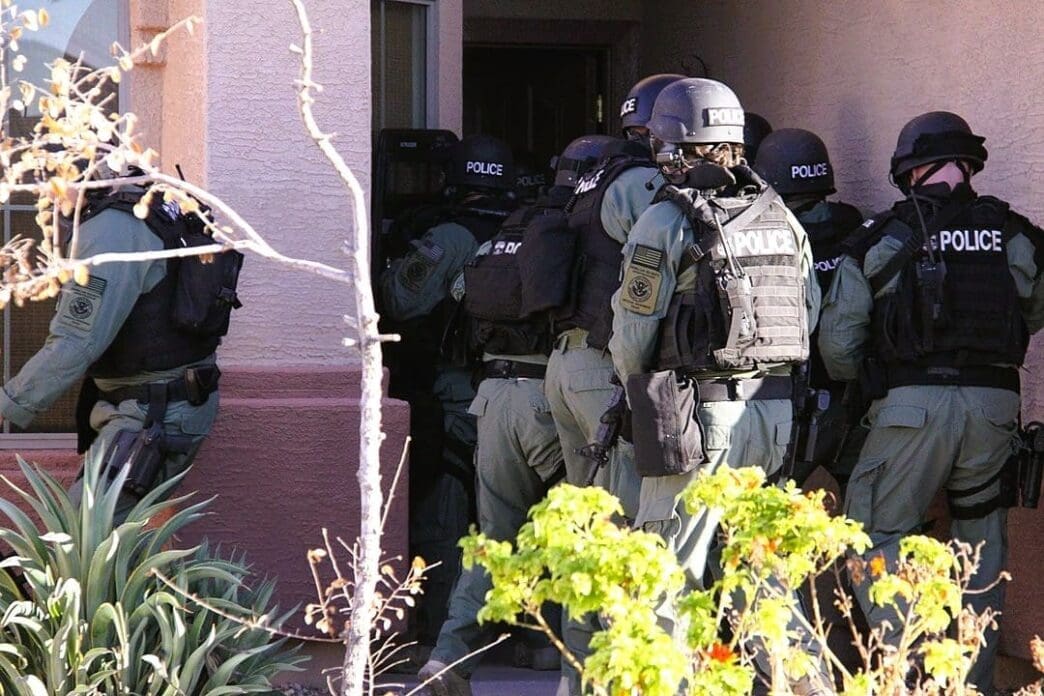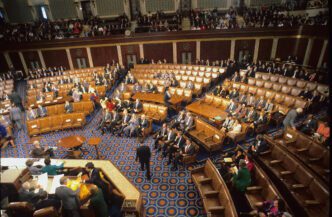Executive Summary
- The Supreme Court allowed the Trump administration to continue Immigration and Customs Enforcement (ICE) “roving patrols” in seven Southern California counties, overturning lower court rulings that found the practices likely violated the Fourth Amendment.
- The majority issued its decision without explanation, drawing a sharp dissent from the three liberal justices who raised concerns about targeting individuals based on apparent ethnicity and the lack of transparency from the Court.
- The ruling is expected to have broader implications, potentially signaling tacit approval for similar immigration enforcement practices nationwide amidst a larger crackdown by the Trump administration.
The Story So Far
- The Supreme Court’s decision allowing “roving patrols” by Immigration and Customs Enforcement (ICE) officials comes amidst a broader crackdown on immigration by the Trump administration, which has consistently pursued emergency appeals on immigration policies. Lower courts had previously found these patrols likely violated the Fourth Amendment by targeting individuals based on apparent ethnicity without establishing “reasonable suspicion,” leading to a significant legal and political debate over immigration enforcement and constitutional protections.
Why This Matters
- The Supreme Court’s decision to allow the Trump administration’s ICE “roving patrols” in Southern California, overturning lower court rulings, is expected to be interpreted as tacit approval for similar immigration enforcement practices elsewhere, potentially expanding the scope of such operations nationwide. This move raises significant concerns about the Fourth Amendment and civil liberties, particularly regarding potential racial profiling, as the Trump administration continues its broader focus on immigration enforcement, reflecting an ongoing legal and political debate.
Who Thinks What?
- The Supreme Court majority allowed the Trump administration to continue “roving patrols” by ICE in Southern California, with Justice Kavanaugh clarifying that apparent ethnicity can be a “relevant factor” alongside other factors in establishing reasonable suspicion for stops.
- Justices Sotomayor, Kagan, and Jackson dissented, condemning the ruling and expressing concern that the government can seize individuals based on their appearance, language, and apparent job, while also criticizing the Court’s practice of issuing high-profile decisions without explanation.
- Lower courts and critics, including the American Civil Liberties Union, found that the ICE patrols likely violated the Fourth Amendment by predominantly targeting individuals based on apparent ethnicity, language, or location without sufficient reasonable suspicion.
The Supreme Court on Monday allowed the Trump administration to continue “roving patrols” by Immigration and Customs Enforcement (ICE) officials in seven Southern California counties, overturning lower court rulings that had found the practices likely violated the Fourth Amendment.
The high court’s decision, issued without explanation, drew a sharp dissent from the three liberal justices. Critics had described the patrols as targeting individuals based on apparent ethnicity, language, or location, leading to interrogations about their immigration status.
Background of the Case
At issue were several incidents where masked and heavily armed ICE agents stopped individuals, including U.S. citizens who identify as Latino, around Los Angeles. Lower courts had determined that ICE likely failed to establish the “reasonable suspicion” required under the Fourth Amendment to justify these stops.
A U.S. District Court in July had ordered the Department of Homeland Security to cease the practice if stops were predominantly based on a person’s apparent ethnicity, language, or presence at specific locations like farms or bus stops. The 9th U.S. Circuit Court of Appeals largely upheld this decision, but the Supreme Court disagreed with this approach.
Justices’ Perspectives
Justice Brett Kavanaugh, a member of the conservative majority, wrote in a concurrence that while apparent ethnicity alone cannot furnish reasonable suspicion, it can be a “relevant factor” when considered alongside other salient factors. He clarified that reasonable suspicion only permits officers to briefly stop and inquire about immigration status.
Kavanaugh also engaged in a broader discussion on illegal immigration, acknowledging that many immigrants seek to escape poverty and lack of opportunities. However, he stressed that under current laws, their presence in the U.S. is illegal unless Congress and the President enact alternative legislation.
Conversely, Justice Sonia Sotomayor, in a fiery dissent joined by Justices Elena Kagan and Ketanji Brown Jackson, condemned the ruling. She stated, “We should not have to live in a country where the government can seize anyone who looks Latino, speaks Spanish, and appears to work a low wage job.”
Sotomayor also criticized the Supreme Court’s growing practice of issuing decisions in high-profile emergency cases without providing an explanation, noting that the Court offered only a single paragraph of boilerplate language in this instance.
Broader Implications
While the decision specifically addresses seven counties in Southern California, it is expected to be interpreted by officials as a tacit approval for similar immigration enforcement practices elsewhere, amidst a broader crackdown on immigration by the Trump administration.
This case marks one of nearly two dozen emergency appeals filed by the Trump administration at the Supreme Court since Trump began his second term in January, many of which have focused on immigration policies.
Previously, U.S. District Judge Maame Ewusi-Mensah Frimpong, in her ruling against the Trump administration, noted the administration’s attempt to convince the court “in the face of a mountain of evidence” that the plaintiffs’ claims were untrue. The American Civil Liberties Union also publicly condemned the Supreme Court’s ruling.
The Supreme Court’s decision to permit the continuation of ICE’s “roving patrols” in Southern California underscores the ongoing legal and political debate surrounding immigration enforcement and constitutional protections. The split ruling, with the majority offering no explanation and a strong dissent highlighting concerns over civil liberties, signals potential implications for future immigration policy and enforcement practices nationwide.








